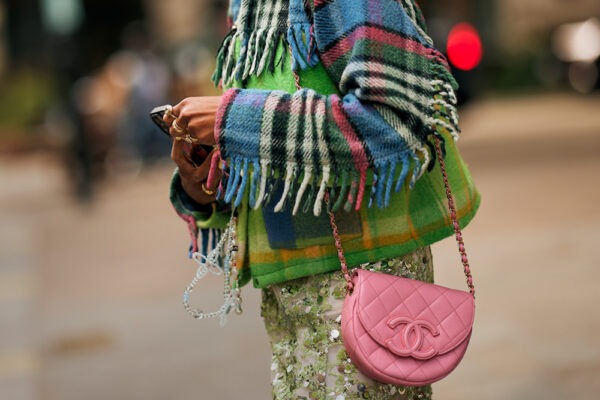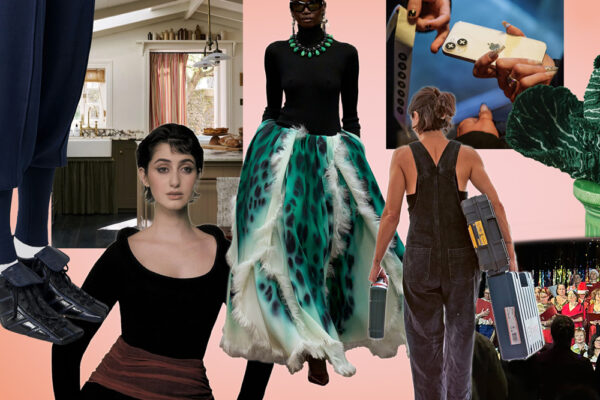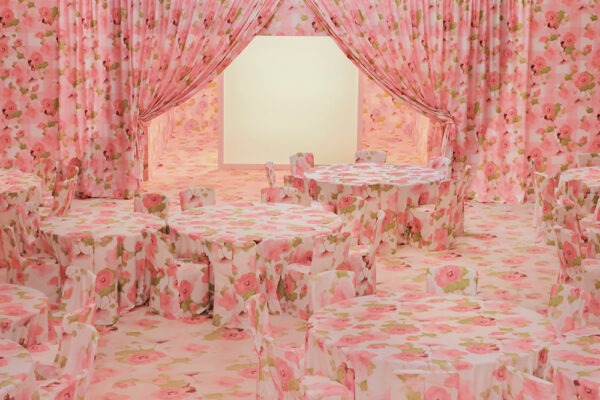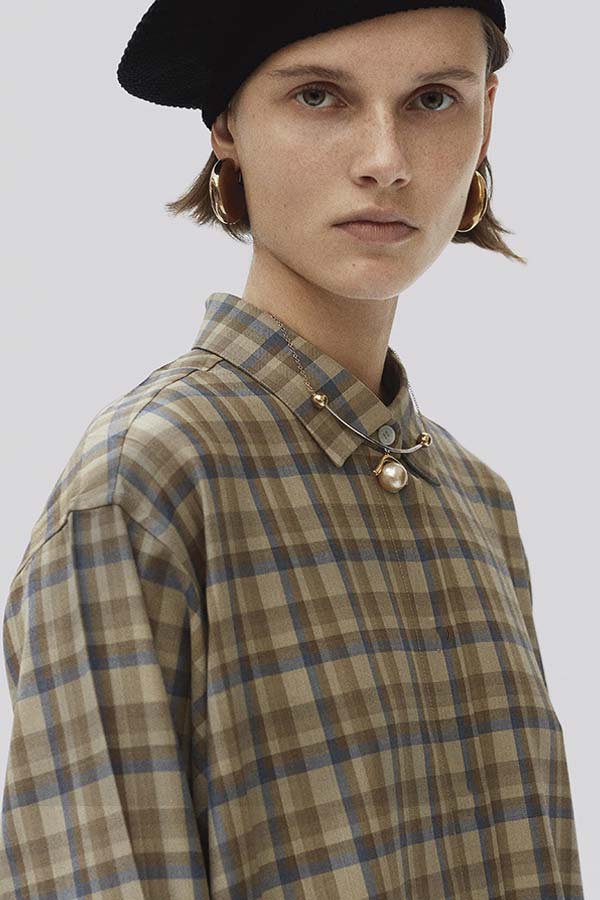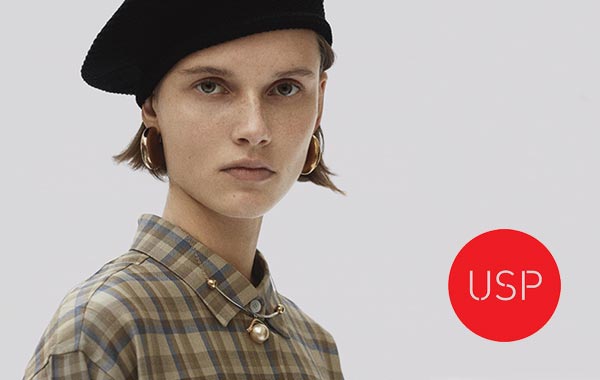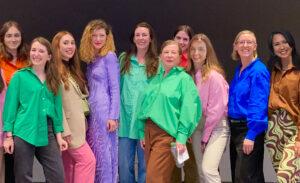
Team USP! (spot the odd ones out 😉)
Over the last few months there’s been growing discussion around the realities of working in the fashion and creative industries, perhaps made even more pertinent as a new wave of designers graduate from university.
Whether it be low pay, a lack of diversity, or the growing ethical dilemma of working in what can be a very problematic industry – jobs in fashion are far from perfect. Often, a toxic culture can make people lose the love and passion that led them to dream of such a career in the first place.
I have never felt more grateful to have a job I enjoy at a company that prioritises employee wellbeing and a kind workplace culture – and I’m not just saying that because I know my boss will be reading this (hello Jane!)
While studying I completed a summer internship at a luxury fashion house (not naming any names) and was offered a paid, full-time position after graduation but ended up turning it down because of the harsh working environment – I wondered if I was mad at the time but listening to my gut ended up being a great decision.
Myself and the other ‘older Millennials’ on the USP team are constantly telling our Gen Z colleagues how good they’ve got it, trying to gently make them aware that this is not the case for everyone working in fashion and design.
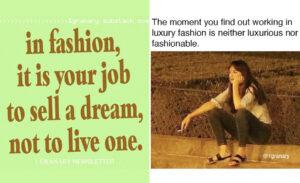
@1granary Instagram
It’s definitely a positive thing that people are starting to talk more openly about how hard a creative career can be, whether it be through substacks that share personal horror stories or memes posted on the 1Granary Insta account (also see their So, Can Fashion Be Fixed newsletter series diving deep into the root causes of fashion discontent).
Fashion writer Alec Leach, author of The World Is on Fire but We’re Still Buying Shoes, often speaks out about his changing perspective on the fashion industry. He recently published an article titled When the Dream Job Becomes a Nightmare, sharing the stories of 34 former fashion professionals on why they quit the industry. Many said that although they didn’t regret their time in fashion, the pressure was not sustainable long term.
Leach says; “The most common thread running through these stories is that people didn’t feel valued at work — and that no matter how bad things got, there would always be someone else to replace them.”
Fashion commentator J’nae Phillips also spoke about this subject on her substack, Fashion Tingz. She discussed how people in the creative industries are three times more likely to experience mental health issues, “a reflection of the current state of the industry, the way professionals are undervalued, and the toxic work culture that runs rampant.”
She also asked; “Who is this industry built for? Who can afford to participate in a literal and metaphorical sense?” – highlighting another major issue in the fashion industry… privilege.
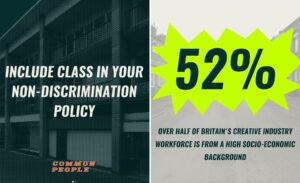
We Are Common People
The British Fashion Council has coauthored a new report into the diversity of the UK fashion industry, finding that only 9 percent of executives and board positions are held by people of colour, and 39 percent by women.
Jamie Gill, founder of The Outsiders Perspective and BFC non-executive director, added: “Our catwalks are diverse, our campaigns are diverse, our consumers are diverse, but our workforce and our decision-makers are not.”
The (Fashion) Minority Report, published in the UK last year, found that 51 percent of the industry professionals it surveyed believe that fashion is not creating change “at a quick enough pace,” regarding diversity, equity, and inclusion.
Also, around a third admitted to getting their job because a family member or friend already worked at the company. Fashion’s diversity issue isn’t just centred around ethnic background, but also includes class and connections. This is being made even more difficult as the cost-of-living-crisis continues.
As someone who worked right the way through university and started their career through a series of unpaid internships, this is something that I can very much relate to.
At a recent industry event I was really interested to hear from We are Common People, a community of those in the UK creative industries who come from a Working-Class background. Only 16% of people in full time creative roles are from a Working-Class background, according to a recent report. The sector, which projects an image of tolerance and inclusivity, is actually less diverse than academia, law and finance.

Henry Holland Studio x Bert & May
A recent article on Dezeen, by their editor-at-large Amy Frearson, talked about the lack of diversity visible at Milan Design Week 2024. Although the interiors industry is also far from perfect, an increasing number of creatives are choosing to move into interiors from fashion as they seek a slower paced lifestyle.
At Clerkenwell Design Week last month I went to a talk with Henry Holland – ex-fashion-designer-turned-ceramicist. He was there to promote his new collab with tile manufacturer Bert & May (so nice!) but much of the discussion centered around how he made his major career shift. Although he is most certainly not without privilege, it was interesting to hear about how Holland wanted to take a step back from the increasingly stressful fashion world and embrace a more considered approach to creating.
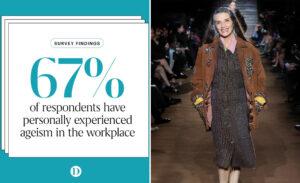
Draper’s Age Discrimination Research / Older Model Walking for Miu Miu
Another issue that is not often talked about is age. In an industry obsessed with youth, workers within fashion tend to feel undervalued as they get older, with many choosing to leave in order to pursue craft-based, interior, or artistic careers.
Again, while much of the discussion around ageism in fashion focuses on models and consumers (something that is still important of course) the lack of older designers is not generally considered.
Back in 2022, Drapers published research into age discrimination in fashion retail, where 67% of respondents revealed they had experienced ageism in their workplace, while 61% said they had witnessed age discrimination against another colleague.
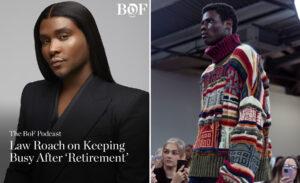
Law Roach on BoF podcast & Nicole Singleton Knitwear, Winner of GFW Award
So, what’s the solution to the fashion industry’s issues? It definitely not an easy one.
At USP we aren’t perfect but pride ourselves on looking at ways we can improve and continue to build an inclusive, kind workplace.
One step towards making a change is being supportive to new graduates and helping to create a better industry where they will be able to thrive.
I was recently a judge for the NEXT Trend Forecasting Award at Graduate Fashion Week and spent the day seeing amazing new talent, as well as meeting a host of industry professionals who wanted to give back and help the next generation.
Graduate Fashion Foundation who run the event are a charitable organisation and an essential part of the fashion industry. Over the past 32 years, over 100,000 graduates and undergraduates have been supported and guided by the charity. It believes that helping the next generation is vital, not just to the graduates themselves but also to the future of the fashion industry.
As well as GFW, earlier this month I also sat on a panel for Tex+ (previously Texprint). They want to bridge the gap between finishing education and finding a role in the fast-changing textile industry. Again, it was rewarding to be a small part of a group of people giving up their time to help new designers.
During a recent podcast interview with Business of Fashion, super stylist Law Roach talked about what led to him wanting to quit the industry and announce his ‘retirement’ in 2022. He’s now back working on his own terms and planning to launch a new online learning platform later this year that will train the next generation of stylists.
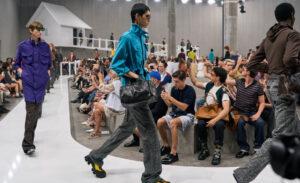
S/S 25 Prada Menswear
Although the creative industries are anything but perfect, the fact that so many people are pushing for change is encouraging, as is the support shown for young graduates. (And let’s admit it, the new approach Gen Zers are showing towards work-life-balance and success points towards them not putting up with so much s*** anyway!)
For their recent menswear collection Miuccia Prada and Raf Simons looked to the youth of today for inspiration. Recognising that times are hard, but that we can put our hope for change in them. “Youth is the future. It is hope. We wanted to do something that would express youthful optimism.”
Laura x
Senior Colour & Trend Editor

